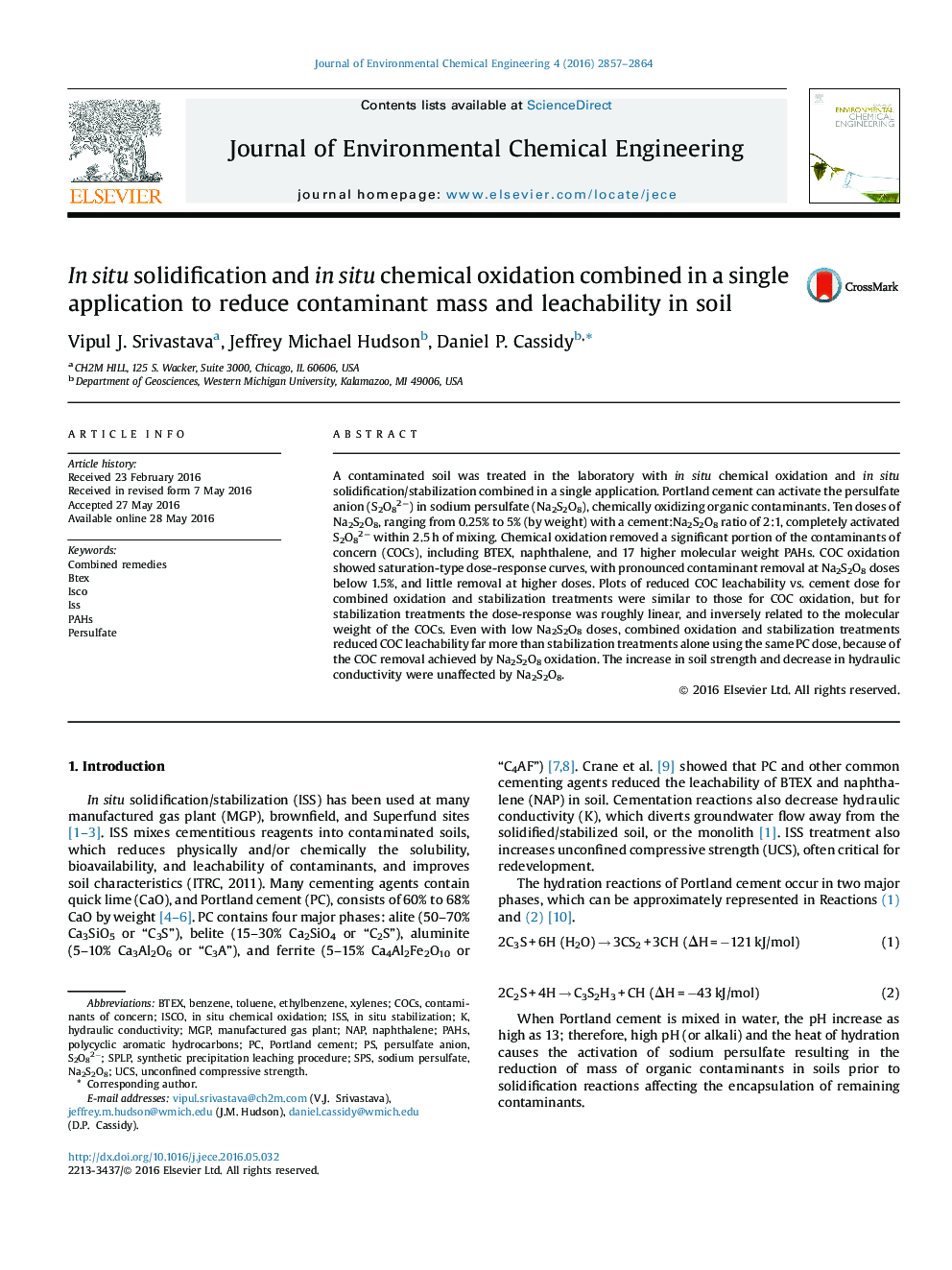| Article ID | Journal | Published Year | Pages | File Type |
|---|---|---|---|---|
| 221552 | Journal of Environmental Chemical Engineering | 2016 | 8 Pages |
•Portland cement activated the persulfate anion in soil, at doses from 0.25% to 5.0% (by weight).•Even low persulfate doses (below 1.5%) oxidized a significant portion of contaminants.•The reduction in contaminant leachability was proportional to contaminant oxidation.•Combined oxidation and stabilization reduced leachability far more than stabilization alone.
A contaminated soil was treated in the laboratory with in situ chemical oxidation and in situ solidification/stabilization combined in a single application. Portland cement can activate the persulfate anion (S2O82−) in sodium persulfate (Na2S2O8), chemically oxidizing organic contaminants. Ten doses of Na2S2O8, ranging from 0.25% to 5% (by weight) with a cement:Na2S2O8 ratio of 2:1, completely activated S2O82− within 2.5 h of mixing. Chemical oxidation removed a significant portion of the contaminants of concern (COCs), including BTEX, naphthalene, and 17 higher molecular weight PAHs. COC oxidation showed saturation-type dose-response curves, with pronounced contaminant removal at Na2S2O8 doses below 1.5%, and little removal at higher doses. Plots of reduced COC leachability vs. cement dose for combined oxidation and stabilization treatments were similar to those for COC oxidation, but for stabilization treatments the dose-response was roughly linear, and inversely related to the molecular weight of the COCs. Even with low Na2S2O8 doses, combined oxidation and stabilization treatments reduced COC leachability far more than stabilization treatments alone using the same PC dose, because of the COC removal achieved by Na2S2O8 oxidation. The increase in soil strength and decrease in hydraulic conductivity were unaffected by Na2S2O8.
